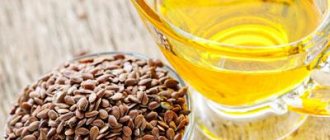Questions about what palm oil is and whether it is harmful concern many Russians. Many prejudices are based on its ban in most developed countries of the world. However, this is absolutely not true.
It turns out that this product is not as terrible as they say. To understand where is truth and where is fiction, it is necessary to consider each variety in detail.
Varieties and their differences
Palm oil is obtained from the fruits of special varieties of palm trees. In total, there are 4 types of this product - red (raw), refined, hydrogenated and technical.
Each variety has different properties and a set of components:
- Red oil is the most natural, because it is obtained only through the use of gentle technologies. It has the highest concentration of valuable components - vitamins A and E. Carotenoids - yellow and orange pigments - give the unusual color.
The product is distinguished by the presence of light sweetness in the taste. It is eaten in its pure form, but in strictly limited quantities.
Due to the high melting point (40°C), the body cannot completely digest all components. As a result, some remains in the intestines in the form of waste;
- Refined deodorized palm oil is used in the production of food products to improve taste characteristics and reduce the cost of products. Colorless and does not have a pronounced aroma. It has a high concentration of saturated fats. Most valuable elements are removed from the composition using chemical compounds;
- Hydrogenated - in the process of hydrogenation, carbon is “hammered” into the mass, as a result of which it turns into a bar;
- Technical oil is the lowest grade type and is not suitable for human consumption. It is used in the chemical and cosmetic industries.
Thus, the safest is the red variety. But it can only be consumed in moderation.
Chemical composition
- Vitamins A, B4, E, K.
- Phosphorus.
- Sterols.
Substances such as phytosterols, lecithin, squalene are present in very small quantities.
In addition, palm oil contains:
- Saturated fatty acids (lauric acid accounts for the lion's share).
- Unsaturated fatty acids.
The latter, in turn, are divided into monounsaturated (oleic and palmitoleic) and polyunsaturated (only linoleic).
Melting point – 33-39°C, calorie content – 884 kcal. Different fractions of palm oil have different melting points; olein melts the fastest (16-24°C), and is used for frying and making dough. The most refractory is stearine (48-52°C), it is widely used in cosmetology, and the main food product containing stearine is margarine.
The peculiarity of this product is that its hardness (and, accordingly, its melting point) increases with time of storage.
Benefits of palm oil
Many people are interested in the question: “Is palm oil harmful or beneficial?”
If we talk about its benefits, then first of all it is necessary to emphasize that it contains a large amount of carotenoids, the strongest antioxidants that are of great value to the human body. Carotenoids have a positive effect on weakened hair and skin. Therefore, it is used by many well-known cosmetic companies.
Palm oil holds the record for vitamin E content, which consists of tocotrienols and tocopherol. Tocotrienols are extremely rare in plants, they fight free radicals that cause cancer.
Palm oil is rich in triglycerols, which are digested very quickly, and when they enter the liver, they are used to produce energy without entering the bloodstream. This oil is especially useful for people who have difficulty digesting other fats, as well as those who watch their figure and athletes.
Palm oil also contains many unsaturated fats: oleic and linoleic acid, which help reduce blood cholesterol levels. These acids are involved in the structuring of bones, joints and are beneficial for skin health.
Provitamin A ensures the functioning of the vision analyzer and is involved in the production of visual pigment in the retina.
Palm oil. Some numbers...
Varieties
Depending on what palm oil is made from, the following types are distinguished:
- Palm.
- Palm kernel.
Palm oil is extracted from the pulp of the fruit, and palm kernel oil is extracted from the pith (the seed in a hard shell). Many of its qualities depend on how palm oil is produced.
Palm vegetable oil is the cheapest in the large family of oilseed extracts. The reason is the high (up to 70%) fat content in plant materials. The list of products that are made using this product is extensive, and extends from food to cosmetics.
The so-called technical oil is not a third type: it is simply a product that has not undergone any purification. In ancient times, it was used to fuel lamps for lighting - although, judging by literary monuments, in temples they used purified fragrant palm product for lamps.
Industrial palm oil can only be used for soap making, in candle production, and as a lubricant. Raw materials that have undergone various degrees of refining are suitable for human consumption. The liquid is obtained from the fruits of palm trees grown in more northern regions, while the southern palms produce a more solid one.
Four myths about palm oil
- Palm oil is indigestible because it melts at a temperature higher than human body temperature. This is not true; fats are not digested in the human body under the influence of temperatures.
- Palm oil is banned in developed countries. This is not true, for example, 10% of palm oil produced is consumed by the United States.
- Palm oil can only be used in the metallurgical industry and soap making. In fact, palm oil has a wider range of uses. It is even known to have been used during World War II to produce napalm. But this does not mean that it absolutely cannot be used for food.
- Palm oil is produced from the trunk of a palm tree. This is not true, it is made from the fleshy part of the oil palm fruit.
The benefits and harms of palm oil are known to many. Palm oil has a number of beneficial properties, some of which are even unique, but this only applies to red palm oil.
Whether to eat palm oil or not, everyone decides for themselves. We tried to give you a little information.
Effect on the human body
There are useful qualities, but there are also not so good ones. But it is known for sure that whether there is cholesterol in the body depends on how much of this product a person consumes. The daily dose is no more than 10 ml (in the complete absence of other fats). But if we remember that we consume both chips and cookies in much larger quantities, we have to admit that in this case palm oil extract is harmful. To avoid unpleasant consequences in the future, you need to find out which products contain palm oil (although these days it is easier to name those that do not).
The positive properties of palm oil with moderate consumption are the prevention of cancer, maintaining the strength of bone tissue, and improving vision.
What are trans fats, and why exactly are they banned?
Image copyright Getty Images
Synthetic trans fats are formed when vegetable oils are saturated with hydrogen, causing them to become solid. In this way, the manufacturer extends the shelf life and life of the product.
Trans fats, like palm oil, significantly reduce the cost of products containing them.
It is trans fats that have a detrimental effect on people's health: a diet high in trans fats increases the risk of developing cardiovascular diseases by 21% and mortality by 28%.
According to WHO statistics, the consumption of trans fats leads to 500 thousand deaths from cardiovascular diseases per year.
This affects the poor most of all.
Considering the negative consequences, WHO has established standards for the consumption of unsafe products. Trans fats should not exceed 1% in each person's daily diet.
The new WHO program proposes to promote the replacement of industrial trans fats, including at the legislative level; and also raise awareness of their harmful effects on health.
Follow our news on Twitter and Telegram
Since ancient times, people have been looking for ways to make the dishes they prepared tastier and more beautiful by experimenting with dried herbs and plant rhizomes, adding them to food and drinks. Information about the first such experiments dates back to millennia BC. Officially, food additives came into our lives at the beginning of the last century. Japanese scientists accidentally added seaweed to the product and found that this significantly affects the taste, enhancing and revealing it. This is how the first additive was isolated.
Later it became clear that in this way it was also possible to improve the smell and texture of food and extend shelf life (this became especially relevant for perishable foods). Manufacturers took this into account - they realized that they could make food products much more attractive to buyers and reduce the cost of business. Thus, a kind of revolution took place in the food industry.
Depending on the task performed, additives are divided into groups: preservatives, flavor enhancers, stabilizers, sweeteners, acidity regulators. Their use is coordinated by a special committee that collects information on the latest research and either approves or prohibits the additive. For convenience, all substances are assigned a numerical and alphabetic international code. The manufacturer is required to indicate it on the packaging.
Today, dietary supplements are surrounded by a lot of conflicting opinions. Palm oil is one of the most controversial ingredients. Some believe that it is harmful to health, while others are sure that it also has positive properties. In this article we will figure out whether palm oil is really as harmful as they say, what effect it has on the human body and how much oil is permissible to eat.
Myths or reality
Myths about palm oil are invented by those who have no idea about the production technology of this product and the strict rules for its transportation. People with a rich imagination, but with a very rough idea of human anatomy and physiology, also contributed.
- First of all, this concerns the statement that this refractory product “clogs” the intestines or stomach. This is nonsense, because palm oil in foods enters the intestines from the stomach, where it does not melt, but is digested with the help of gastric juice (containing hydrochloric acid). Further downwards comes a nutritious porridge-like mass, the various components of which are absorbed in different parts of the intestine. This also includes numerous discussions on the topic of whether palm oil is excreted from the body. In fact, only waste products and substances that are not digested in the gastrointestinal tract are removed from the body. Products can be removed in pure form only in case of dysbacteriosis.
- Another common myth is that this product is banned everywhere, including in Russia. In fact, there is not a single country in Europe or in the world in general where this product is banned. But it is possible that imports of palm oil into Russia will soon decrease significantly: by the end of July 2020, the State Duma will adopt a law doubling the tax on this raw material. This means that food products that are made using it will double in price and become uncompetitive compared to the same confectionery products for which butter or sunflower is used. Falsification of dairy products (cheeses, condensed milk, etc.), in which animal fats are substituted, will also become unprofitable. And this is no longer a myth, but a reality.
- Palm oil causes cancer. No more often than other vegetable fats. It's all about the method of preparation and the amount of use. If you fry something with native sunflower oil over high heat and use the same oil several times, it is a pure carcinogen. This applies to confectionery and other food: it does not matter whether sunflower oil or other oil is added to the confectionery mass or baked goods - if the preparation standards are not met and the fat content is exceeded, this contributes to the development of oncology.
- Oil palm pomace contains trans fats. Nothing like this. The most harmful in terms of trans fats is hydrogenated palm oil, which is “hardened” using a special method for ease of use in confectionery production. Before this everything is fine.
- We will not even comment on rumors about the transportation of this product in dirty oil tanks. It’s like in the film “Born of the Revolution”: “And in St. Petersburg they make meatballs from the dead.”
"Vegetable fat"
The report separately notes that back in 2003, WHO and FAO (Food and Agriculture Organization of the United Nations) pointed out the potential harm of palm oil to health. However, since then, its production and consumption in the world has doubled, and in general from 1995 to 2020 - more than four times.
One of the reasons for this expansion, the authors of the document call the close connection of this industry with manufacturers of ready-made food and semi-finished products, who jointly organized a powerful lobby to promote their product.
In particular, according to the report's authors, lobbyists around the world are successfully resisting attempts to oblige palm oil producers to tell consumers that it is present in the finished product. It can be found on the ingredient list under any of about 200 alternative names, such as simply “vegetable fats.”
Why is it added to baby food?
Then, why in other products - to reduce the cost of goods. Although the recommendations for this food product clearly indicate that its consumption is undesirable for people under 18 and after 50 years of age, not all product manufacturers list palm oil in their composition.
If baby food, especially formulas that replace breast milk, contains palm oil, it binds calcium, reducing the amount of macronutrients absorbed by the child's body, and forms calcium palmitate. This substance is nothing more than soap, and is excreted in the feces without being absorbed in the intestines. There is nothing useful for the baby in this. Therefore, you need to look for a breast milk substitute without palm oil.
Reputation of oil manufacturers
The use of palm oil is associated with the emergence of new environmental problems. To grow palm trees, plantations are being expanded and tropical forests, which are the main habitat of many endangered animals, are being cut down.
The World Wildlife Fund does not oppose palm oil, but it sharply criticizes the policy of many suppliers: instead of creating plantations on developed lands, they clear new areas by burning what grows on them.
To support opponents of deforestation, many manufacturers have begun marketing products labeled “palm oil-free.” This environmental move was perceived by the uninformed public as a failure on the grounds that the product was harmful to health. The measure gave rise to numerous myths about the dangers of palm oil.
Health Hazard
Allergies to palm oil are no more common than to other plant oil extracts. This is not the main danger. By eating foods prepared with this extract, we overload the body with harmful fats.
In general, it is best to ask your doctor if you can eat palm oil.
But the whole truth is that many products in which palm oil extract cannot be included either according to GOST or according to moral and ethical standards, contain it.
We can find palm oil in chocolate and cheese, condensed milk and ice cream - although there should be real ice cream without palm oil and without any vegetable oils. We would be happy to eat less of it, but not everyone can distinguish butter from palm oil, and it is not always possible to test products at home for the content of certain substances.
If we are talking about counterfeit products, products with palm oil do not contain any mention of this ingredient on the label. How this substance is designated in the product composition by bona fide manufacturers: palm oil (in Russian shyly “vegetable fats”).
Why is it added to products - to extend shelf life. This mainly applies to flour confectionery products (for example, cookies without palm oil have a shorter shelf life), chips and other fried “snacks”, which must be crispy and have a long shelf life.
Consuming large quantities of the product may cause:
- Development of insulin-independent diabetes mellitus.
- Fatty degeneration of hepatocytes (liver cells).
- Thrombosis, etc.
There is no way to remove palm oil from the body. It ceases to be itself once it enters the stomach. If you mean bad cholesterol, then to remove it it is enough to limit your fat intake and drink green tea.
Recommendations for use
Palm oil has both beneficial and harmful qualities that must be taken into account when using it. But you should not assume that this product is poison and should be completely excluded from your diet. The first thing to do is to reduce the level of its use . This product can be consumed, but preferably in small quantities.
In addition, when purchasing some products you should follow important recommendations:
- Buy and consume ice cream, confectionery and bakery products as little as possible.
- When purchasing food products, be sure to carefully study the descriptions on the packages. If there is a vague phrase “vegetable fat”, then this property will indicate the low quality of the product. Conscientious manufacturers always indicate that the product contains palm oil, rather than hiding its presence.
- You need to buy products that are made according to GOST , and not according to technical regulations.
- If the product is stored for a long period, it means that it contains a high content of palm oil.
- You should completely give up fast food.
In any case, you should follow important recommendations when using this product. You should not assume that palm oil has a strong negative impact on health, it just needs to be consumed correctly. There is no need to abuse it. And in moderate quantities, instead of being harmful, this oil, on the contrary, will have a positive effect on health.
Use in folk medicine
In folk medicine, red palm oil is used - the most useful, it is not subjected to heat or chemical treatment, so its valuable components are preserved as much as possible. It contains 15 times more carotenoids than carrots. This is a powerful antioxidant. It looks like an oily liquid of a thick red-orange color.
It is used for inflammatory diseases, wounds, burns, arthritis and other joint diseases. The main use is external. Tissues affected by destructive processes are moisturized with oil palm extract.
For burns and microtraumas, it is used to lubricate the skin; for inflammatory processes in the mouth and cervical erosion, a gauze swab soaked in the extract is used. To treat psoriasis and eczema, mix with walnut, add birch tar in very small quantities and lubricate the affected areas of the skin with the resulting ointment. Symptoms of gout and arthritis are alleviated by rubbing the joints.
Damage to the environment
The environmental damage caused by oil palm plantations is forcing international organizations to take measures to save the ecosystem. The largest number of plantations are located in Malaysia and Indonesia; for this purpose, a huge amount of virgin tropical forests was cut down. Because of this, many species of animals and birds suffered, and orangutans were on the verge of extinction, as they were deprived of their usual habitat. At the moment, Malaysia has stopped cutting down new forests for plantations and has adopted a number of environmental laws in order to at least slightly restore the ecological balance. It is expected that it will be possible to use agricultural land more economically and expediently and reduce damage from industrial production.











